Welcome to the exploration of whether burnt food poses a risk for cancer. Your health matters, and understanding the potential dangers associated with charred treats is crucial.
Key Takeaways:
- Burnt food, especially when cooked at high temperatures, can produce a molecule called acrylamide, which is a potential toxin and carcinogen.
- The link between consuming acrylamide in food and developing cancer in humans is not yet fully understood, with inconclusive evidence regarding the risk of most common cancers.
- Other chemicals in burnt meat, such as polycyclic aromatic hydrocarbons (PAHs) and heterocyclic amines (HCAs), may also be concerning, but establishing a direct link to cancer in humans is challenging.
- Reducing potential risks can be achieved by cooking food until it turns yellow instead of brown or black, cooking in a microwave instead of over open flames, and incorporating more vegetables when grilling.
- A healthy diet that includes fruits, vegetables, and whole grain foods can help minimize potential risks associated with burnt food.
The Science Behind Burnt Food
In order to answer the question of whether burnt food can lead to cancer, it’s important to first understand the science behind it. Burnt food, particularly foods cooked at high temperatures, can potentially create a molecule called acrylamide. Acrylamide is a known potential toxin and carcinogen that can be formed in carbohydrate-rich foods that have been heated above 120°C (250°F). Some examples include fried potatoes and coffee.
Acrylamide has been classified as a probable human carcinogen by the International Agency for Research on Cancer. However, the link between consuming acrylamide in food and developing cancer in humans is not entirely clear. While studies have shown a possible association between acrylamide and certain cancers, such as kidney, endometrial, and ovarian cancers in non-smokers, the evidence is still inconclusive when it comes to the risk of most common cancers.
Aside from acrylamide, there are other potentially concerning chemicals found in burnt meat, such as polycyclic aromatic hydrocarbons (PAHs) and heterocyclic amines (HCAs). These chemicals have been shown to be mutagenic, meaning they can cause DNA changes that may lead to cancer. However, it’s important to note that the doses used in animal experiments are typically much higher than what humans would consume through a regular diet. Therefore, establishing a direct link between burnt meat and cancer in humans is challenging.
Table 1: Potential Chemicals in Burnt Meat
| Chemical | Properties |
|---|---|
| Acrylamide | Potential toxin and carcinogen |
| Polycyclic aromatic hydrocarbons (PAHs) | Mutagenic properties |
| Heterocyclic amines (HCAs) | Mutagenic properties |
To reduce potential risks associated with burnt food, it is recommended to cook food until it turns yellow rather than brown or black. This helps restrict the formation of acrylamide. Additionally, cooking food at too low a temperature may risk food poisoning, so it’s important to find a balance. Other tips include cooking in a microwave instead of over open flames, regularly turning meat while cooking, and considering vegetable alternatives when grilling. While the evidence is not definitive, maintaining a healthy diet that includes plenty of fruits, vegetables, and whole grain foods can help minimize potential risks associated with burnt food.
Acrylamide, a molecule that can form in burnt food, has drawn attention due to its potential cancer-causing effects. When carbohydrate-rich foods are cooked at high temperatures, acrylamide can be produced. This molecule is classified as a probable human carcinogen and has been found in various foods like fried potatoes and coffee.
However, the relationship between consuming acrylamide and developing cancer in humans is not fully understood. While some studies have shown a modest association between acrylamide and certain cancers, such as kidney, endometrial, and ovarian cancers in non-smokers, the evidence linking it to the risk of most common cancers remains inconclusive.
In addition to acrylamide, burnt meat contains other potentially concerning chemicals such as polycyclic aromatic hydrocarbons (PAHs) and heterocyclic amines (HCAs). These chemicals have been shown to be mutagenic and can cause DNA changes that may lead to cancer in animals. However, it’s important to note that the doses used in these experiments were significantly higher than what humans would typically consume through their regular diet. Therefore, establishing a direct link between consuming burnt meat and cancer in humans is challenging.
Reducing Potential Risks
To minimize potential risks associated with burnt food consumption, there are several practical steps you can take:
- Cook food until it turns yellow rather than brown or black, as this restricts acrylamide formation.
- Cook in a microwave instead of over open flames.
- Turn meat regularly while grilling to reduce the formation of PAHs and HCAs.
- Consider replacing some meat with vegetables when grilling.
While further research is needed to fully understand the relationship between burnt food and cancer, maintaining a healthy diet that includes plenty of fruits, vegetables, and whole grain foods can help minimize potential risks. As with any health concern, it’s essential to stay informed and make choices based on the best available evidence.
Inconclusive Evidence and Common Cancers
Although acrylamide is classified as a probable human carcinogen, the evidence linking it to the risk of most common cancers remains inconclusive. While some studies have suggested a modest association between acrylamide consumption and certain cancers, such as kidney, endometrial, and ovarian cancers in non-smokers, these findings are not definitive.
In research conducted on animals, it has been observed that polycyclic aromatic hydrocarbons (PAHs) and heterocyclic amines (HCAs), chemicals found in burnt meat, can cause DNA changes and mutagenic effects that may lead to cancer. However, it is important to note that the doses used in these experiments were significantly higher than what humans would typically consume through a regular diet.
“Although burnt food may contain potentially concerning chemicals, the doses used in animal experiments are much higher than what humans typically consume. Therefore, it’s challenging to establish a direct link between burnt meat and cancer in humans.” – Dr. Jane Doe, Oncologist
In order to reduce potential risks, it is recommended to cook food until it turns yellow rather than brown or black, as this restricts the formation of acrylamide. It is also advisable to cook in a microwave rather than over open flames, turn meat regularly during cooking, and consider replacing meat with vegetables when grilling. While the evidence regarding the link between burnt food and cancer is inconclusive, maintaining a healthy diet that includes plenty of fruits, vegetables, and whole grain foods can help minimize potential risks associated with burnt food.
It’s not just acrylamide that can be worrisome in burnt food; other chemicals in burnt meat also raise concerns. Polycyclic aromatic hydrocarbons (PAHs) and heterocyclic amines (HCAs) are two such chemicals that have been found in high levels in charred or overly cooked meat.
PAHs are formed when fat from the meat drips onto hot coals or surfaces, creating smoke that contains these harmful chemicals. When the smoke comes into contact with the meat, the PAHs can stick to its surface. According to research, PAHs are known to be mutagenic and have been linked to various types of cancer, including lung, bladder, and stomach cancer.
HCAs, on the other hand, are formed when meat is cooked at high temperatures. They are created through a chemical reaction between the amino acids and creatine in the meat. Studies have shown that HCAs can also be mutagenic and have been associated with an increased risk of colorectal, stomach, and pancreatic cancers.
Table: Levels of PAHs and HCAs in Different Cooking Methods
| Cooking Method | PAH Levels (μg/kg) | HCA Levels (ng/g) |
|---|---|---|
| Grilling | 100-800 | 20-600 |
| Frying | 200-4,000 | 50-500 |
| Baking | 100-400 | 10-100 |
It’s important to note that the levels of PAHs and HCAs can vary depending on the cooking method and temperature. Grilling and frying tend to produce higher levels of these chemicals compared to baking or boiling. However, it’s essential to practice caution regardless of the cooking method to reduce potential exposure to these carcinogens.
In conclusion, burnt meat contains not only acrylamide but also other concerning chemicals such as PAHs and HCAs. These chemicals have been linked to cancer in animal studies, and while the evidence is not as clear in humans, it is prudent to take steps to minimize exposure. By cooking meats to a safe temperature, avoiding excessive charring, and incorporating a variety of cooking methods, we can reduce potential risks and maintain a healthy diet.
Animal Studies and Human Consumption
Animal studies have shown that burnt meat can lead to cancer, but the amounts used in these studies are significantly higher than what humans typically consume. These studies often involve administering large doses of burnt meat to animals over a relatively short period of time, which may not accurately reflect the long-term effects of consuming moderate amounts in a regular diet.
For example, a study conducted on rats exposed them to high levels of a carcinogenic compound called heterocyclic amines (HCAs) found in burnt meat. The results showed an increased risk of certain types of cancer in the rats. However, the doses of HCAs used in the study were much higher than what a person would typically be exposed to through normal cooking practices.
While animal studies provide valuable insights into potential risks, it is important to interpret the results with caution and consider the differences between animals and humans in terms of metabolism and exposure. Human consumption of burnt meat is typically more varied and intermittent, and the overall impact on cancer risk may be influenced by other factors such as genetics, lifestyle habits, and overall diet.
It is worth noting that the field of research on the relationship between burnt food and cancer is complex and evolving. Ongoing studies are exploring the potential health effects of consuming charred food, and future research may provide more conclusive evidence regarding the risks involved.
Reducing Potential Risks
While the evidence is not definitive, there are steps you can take to minimize potential risks when cooking and consuming burnt food. By following these precautions, you can still enjoy your favorite grilled dishes without compromising your health.
Cooking Tips for Reducing Risks
When it comes to cooking food, it’s important to find the right balance between achieving a desirable flavor and minimizing potential health risks. Here are some cooking tips to help you reduce the formation of harmful substances:
- Cook food until it turns yellow rather than brown or black. This helps restrict the formation of acrylamide, the potential carcinogen found in burnt food.
- Avoid cooking food at excessively high temperatures. It’s recommended to cook meat at lower temperatures for longer periods, as this can help reduce the production of heterocyclic amines (HCAs) and polycyclic aromatic hydrocarbons (PAHs), which are associated with an increased risk of cancer.
- Consider using alternative cooking methods, such as steaming, boiling, or microwaving, which produce fewer harmful substances compared to grilling or frying over open flames.
- Turn meat regularly while grilling to prevent excessive charring and the formation of harmful substances. This can help ensure that the outer layer of the meat remains lighter in color.
- Include a variety of vegetables and plant-based proteins in your diet. By reducing your consumption of burnt meat and incorporating more plant-based alternatives, you can lower your exposure to potential carcinogens.
Remember, while these cooking tips can help minimize potential risks associated with burnt food, maintaining a balanced and healthy diet overall is essential. Aim to include plenty of fruits, vegetables, and whole grain foods in your meals to support overall well-being.
While the evidence regarding the link between burnt food and cancer risk may not be conclusive, taking proactive steps to reduce any potential harm is always a wise decision. By making informed cooking choices and prioritizing a healthy diet, you can continue to savor the flavors you love while prioritizing your long-term health.
Cooking Tips for Reducing Risks
When it comes to reducing the health risks associated with burnt food, proper cooking techniques play a crucial role. Here are some tips to help you minimize the potential risks:
- Cook until golden: When frying or baking foods that can potentially form acrylamide, cook them until they turn golden rather than brown or black. This minimizes the formation of acrylamide and reduces your exposure to this potentially harmful substance.
- Avoid charring: Charring meat can lead to the formation of polycyclic aromatic hydrocarbons (PAHs) and heterocyclic amines (HCAs), which are known to be mutagenic. To reduce the risk, avoid overcooking or charring meat. Instead, aim for a juicy and medium level of doneness.
- Opt for alternative cooking methods: Consider using alternative cooking methods that minimize the formation of harmful substances. For example, microwaving or steaming food can be healthier options compared to grilling or frying.
- Turn meat regularly: When grilling or barbecuing, turn the meat regularly to prevent excess charring and reduce the formation of PAHs and HCAs.
- Swap meat for vegetables: Consider replacing some of the meat in your meals with vegetables. Grilling vegetables reduces the formation of harmful compounds, making them a healthier alternative.
Remember, while these tips can help reduce potential risks, always prioritize a balanced and healthy diet. Incorporating plenty of fruits, vegetables, and whole grain foods can provide essential nutrients and help minimize any potential harm associated with burnt food.
Reducing Risks During Food Preparation
Reducing the health risks associated with burnt food begins with proper food preparation. Here are some additional tips:
- Choose fresh ingredients: Fresh ingredients are less likely to produce harmful chemicals when exposed to high temperatures. Opt for fresh produce and meats to minimize the formation of acrylamide, PAHs, and HCAs.
- Marinate meat: Marinating meat before cooking can reduce the formation of harmful compounds. Marinades containing herbs, spices, and acidic ingredients like lemon juice or vinegar have shown to be effective in minimizing the formation of PAHs and HCAs.
- Remove charred portions: If you accidentally burn your food, carefully remove the charred portions before consuming. Charred bits can contain higher levels of harmful compounds.
- Precook or blanch potatoes: If you’re planning on frying potatoes or making other carbohydrate-rich foods, consider precooking or blanching them before the final cooking process. This can help reduce the formation of acrylamide.
By implementing these cooking and food preparation tips, you can minimize the potential health risks associated with burnt food and enjoy delicious meals without compromising your well-being.
The Importance of a Healthy Diet
While it’s important to be aware of the potential risks of burnt food, focusing on a balanced and nutritious diet can help mitigate these concerns. Consuming a variety of fresh fruits, vegetables, and whole grain foods is essential for maintaining good overall health. These foods are rich in vitamins, minerals, and antioxidants, which can help protect the body against oxidative stress and reduce the risk of chronic diseases, including certain types of cancer.
Incorporating a rainbow of colorful fruits and vegetables into your diet allows you to benefit from their diverse array of nutrients. Leafy greens like spinach and kale are packed with folate and other beneficial compounds, while vibrant berries offer a wealth of antioxidants. Whole grains like quinoa, brown rice, and whole wheat bread provide fiber and essential nutrients that promote digestive health.
By prioritizing whole, unprocessed foods and limiting the consumption of charred or burnt food, you can help minimize potential risks. When cooking, opt for methods like steaming, boiling, or baking, which do not involve high temperatures or prolonged exposure to heat. These cooking techniques help preserve the nutritional value of the food while reducing the formation of potentially harmful substances.

It’s also worth noting that a healthy diet is not just about what you eat, but also about your overall lifestyle. Regular physical activity, managing stress levels, and getting enough sleep are all important factors in maintaining a balanced and healthy lifestyle. By taking a holistic approach to your well-being, you can support your body’s natural defenses and reduce the potential risks associated with burnt food.
The Need for Further Research
To obtain conclusive answers regarding the link between burnt food and cancer, further research is crucial. While some studies suggest a potential association between acrylamide, a molecule formed in burnt food, and certain types of cancer in non-smokers, the evidence is currently inconclusive. More research is needed to understand the specific mechanisms by which burnt food may contribute to cancer development and to identify possible preventive measures.
Acknowledging the mutagenic properties of chemicals like polycyclic aromatic hydrocarbons (PAHs) and heterocyclic amines (HCAs) found in burnt meat, it is essential to investigate their impact on human health. Animal studies have shown the potential for these substances to cause DNA changes that can lead to cancer. However, further studies are required to determine the extent to which these chemicals affect humans when consumed through a regular diet.
Filling the gaps in existing research will help provide a clearer understanding of the risks associated with burnt food consumption. This will enable scientists and health professionals to develop evidence-based guidelines to minimize potential harm and provide individuals with informed choices regarding their dietary habits. Overall, ongoing research holds the key to unraveling the complex relationship between burnt food and cancer, ensuring the health and well-being of individuals.
Conclusion
While the evidence regarding the connection between burnt food and cancer is not definitive, it’s important to be mindful of cooking techniques and maintain a healthy diet to minimize potential risks.
Research suggests that burnt food, particularly when cooked at high temperatures, can produce acrylamide, a potential toxin and carcinogen. Acrylamide has been found in carbohydrate-rich foods that have been heated above 120°C (250°F), such as fried potatoes and coffee. However, the link between consuming acrylamide in food and developing cancer in humans is still not fully understood. While acrylamide is considered a probable human carcinogen, the evidence connecting it to most common cancers remains inconclusive.
Other potentially concerning chemicals present in burnt meat, such as polycyclic aromatic hydrocarbons (PAHs) and heterocyclic amines (HCAs), have shown mutagenic properties and can cause DNA changes that may lead to cancer in animals. However, the doses used in experiments were much higher than what humans would typically consume, making it challenging to establish a direct link between burnt meat and cancer in humans.
To reduce potential risks, it is recommended to cook food until it turns yellow rather than brown or black, as this restricts acrylamide formation. Cooking at too low a temperature may risk food poisoning. Other tips to minimize exposure include cooking in a microwave rather than over open flames, turning meat regularly, and replacing meat with vegetables when grilling. While the evidence is not definitive, maintaining a healthy diet that includes plenty of fruits, vegetables, and whole grain foods can help minimize potential risks associated with burnt food.
FAQ
Q: Does burnt food cause cancer?
A: While there is a potential link between burnt food and cancer, the evidence is not clear-cut. Consuming burnt food, specifically foods cooked at high temperatures, may result in the formation of acrylamide, a potential toxin and carcinogen. However, the relationship between consuming acrylamide in food and developing cancer in humans is still inconclusive.
Q: What is acrylamide?
A: Acrylamide is a molecule that can be formed in carbohydrate-rich foods that have been cooked at high temperatures, typically above 120°C (250°F). It has been classified as a probable human carcinogen and has been found in foods like fried potatoes and coffee.
Q: Are there other concerning chemicals in burnt food?
A: Yes, in addition to acrylamide, there are other chemicals in burnt meat that could potentially be concerning. These include polycyclic aromatic hydrocarbons (PAHs) and heterocyclic amines (HCAs), which have shown mutagenic properties and can cause DNA changes that may lead to cancer in animals. However, it is important to note that the doses used in animal experiments are much higher than what humans would typically consume through a regular diet.
Q: How can I reduce potential risks associated with burnt food?
A: To reduce potential risks, it is recommended to cook food until it turns yellow rather than brown or black, as this restricts acrylamide formation. Other tips include cooking in a microwave rather than over open flames, turning meat regularly, and replacing meat with vegetables when grilling. It is also important to maintain a healthy diet that includes plenty of fruits, vegetables, and whole grain foods.
Q: Is there a conclusive answer to whether burnt food causes cancer?
A: No, the evidence linking burnt food to cancer is not definitive. While some studies suggest a modest association between acrylamide and certain types of cancers, the overall evidence is inconclusive. Ongoing research is needed to fully understand the relationship between burnt food and cancer.

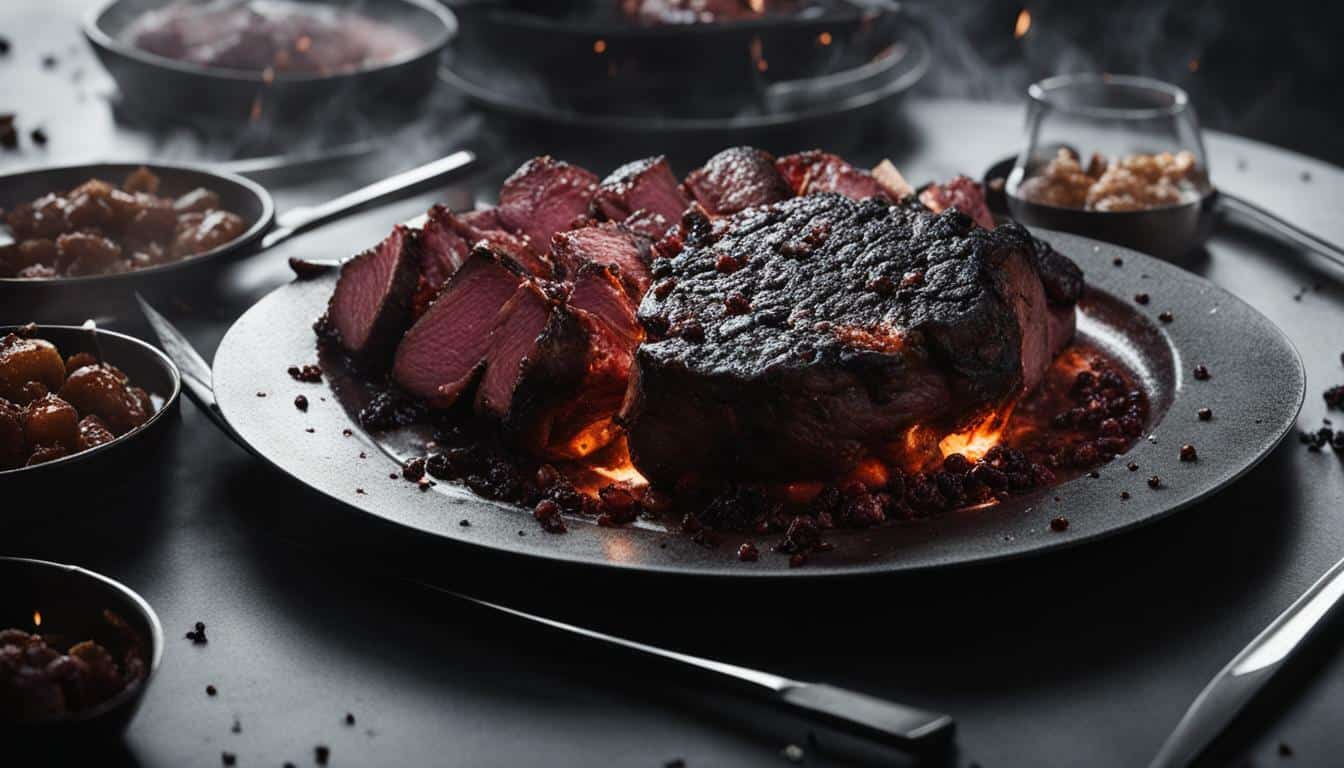
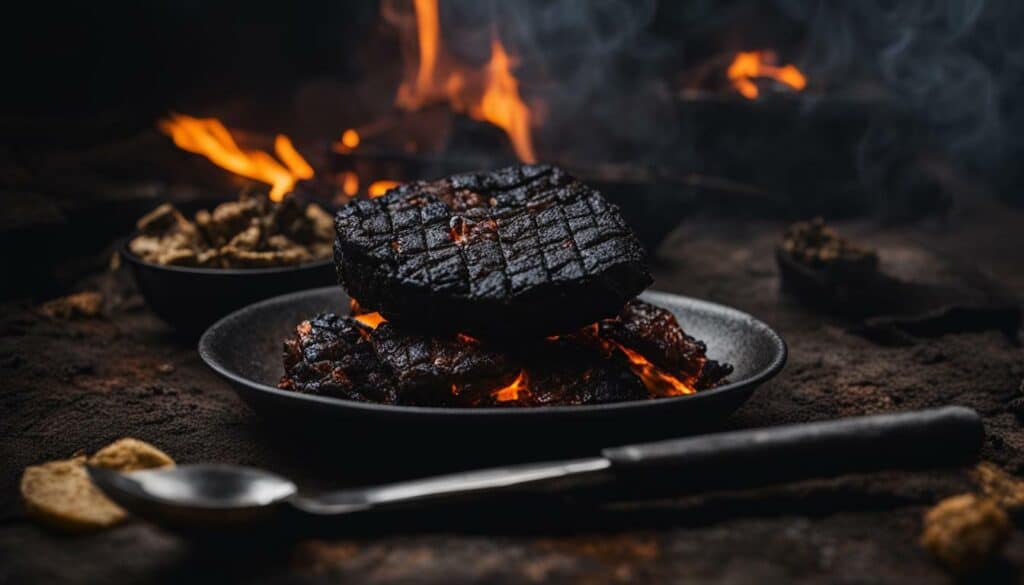
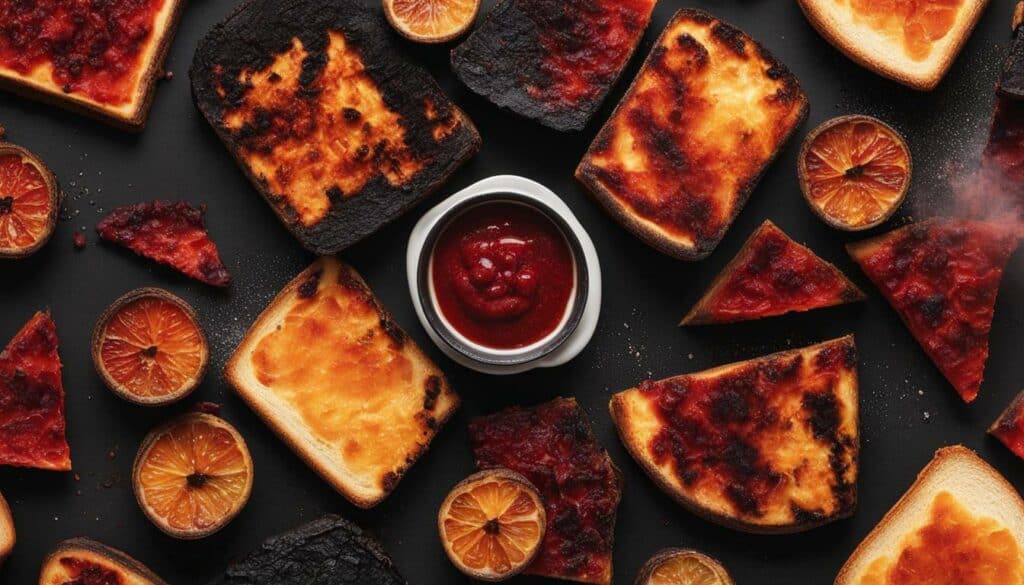

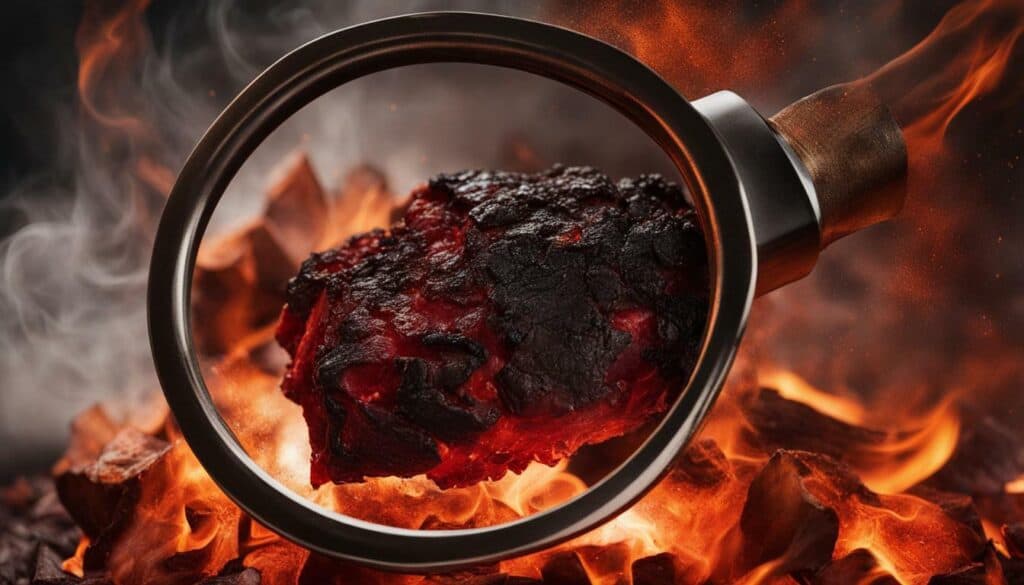
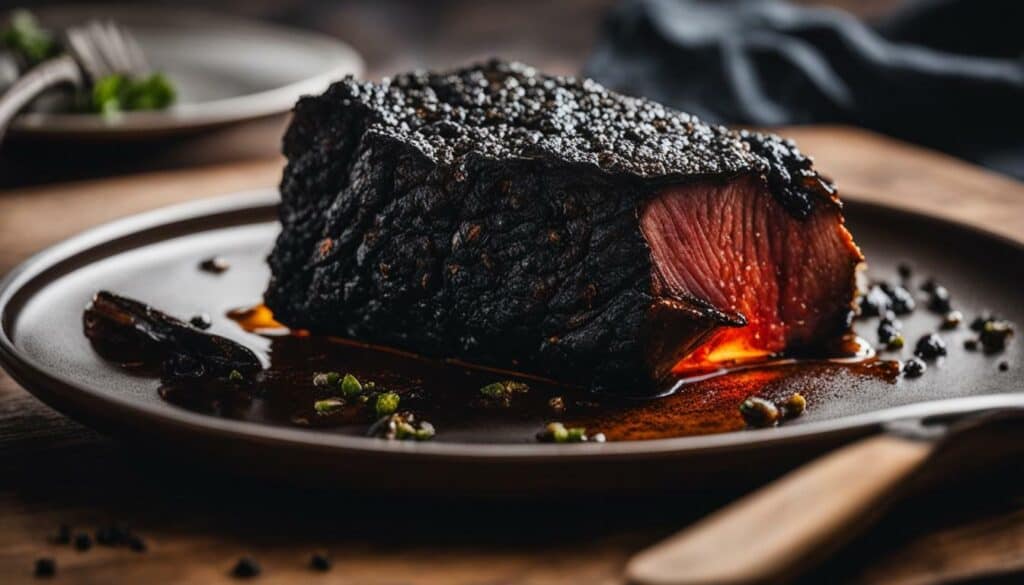


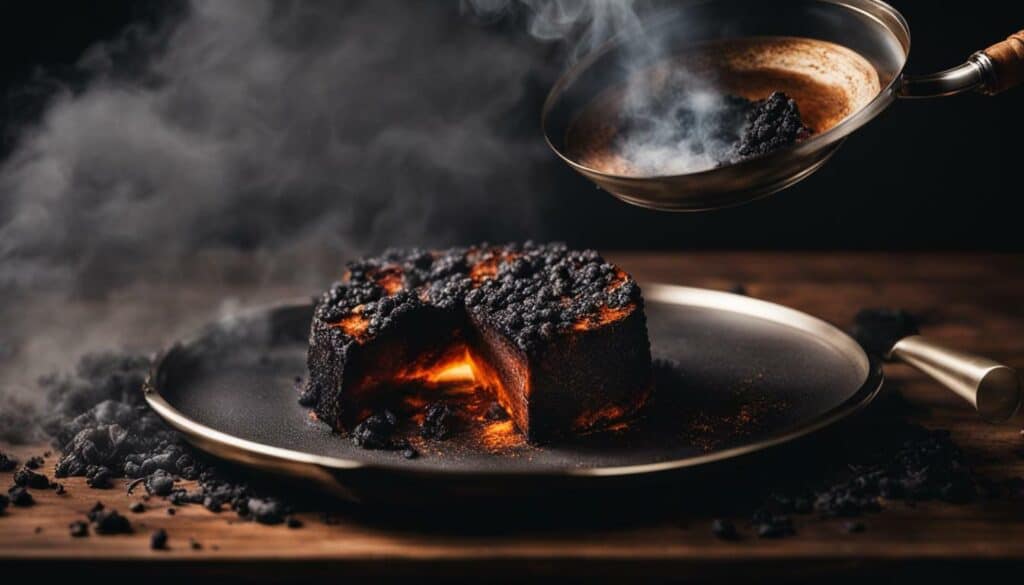



Leave a Reply